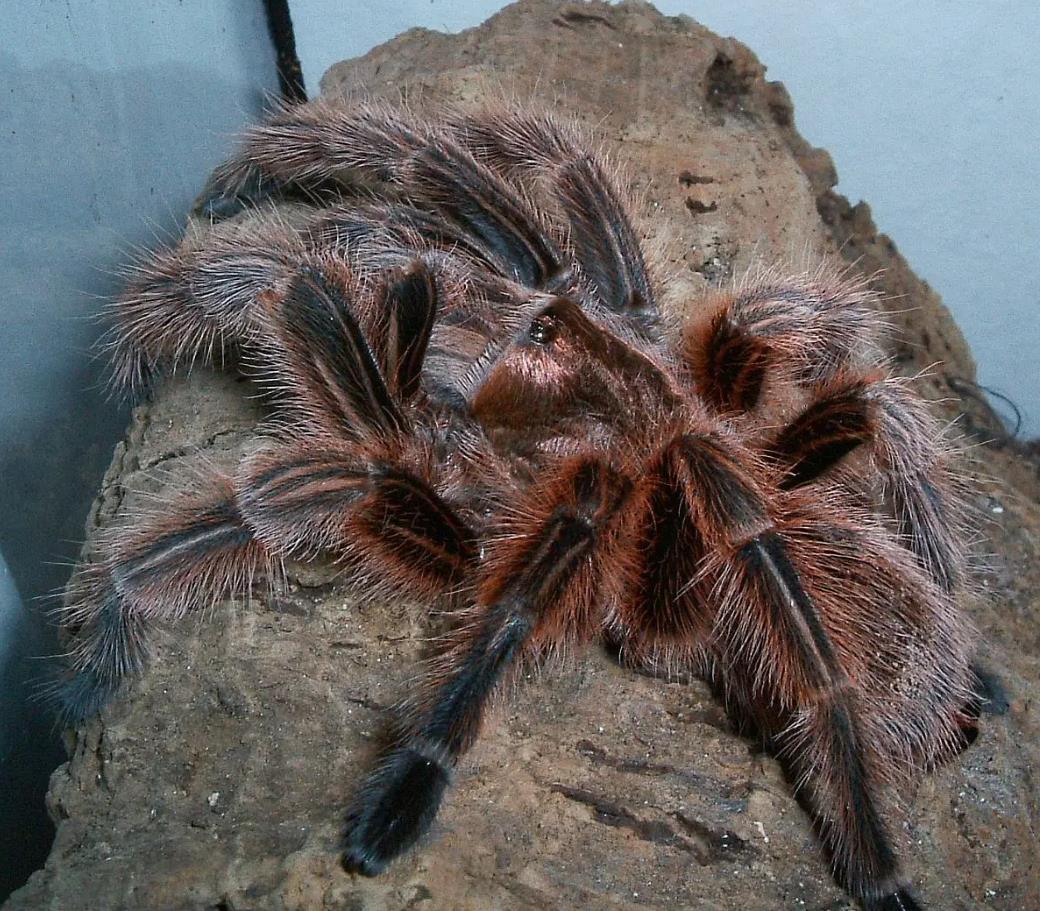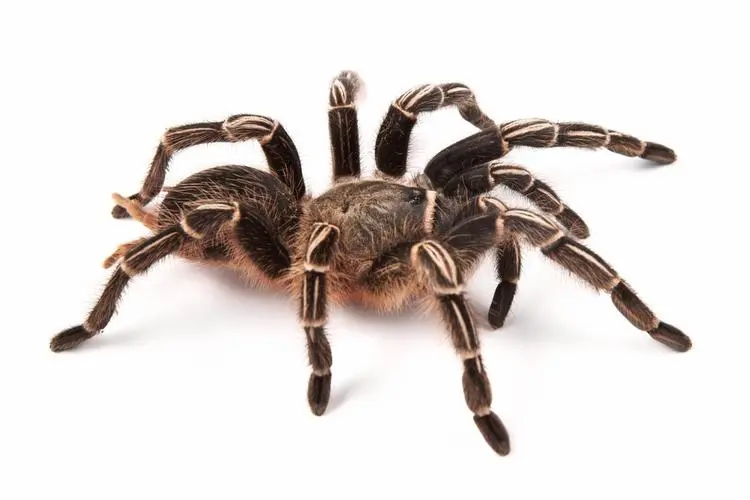The Fascinating World of Pet Tarantulas
what do tarantulas eat:Maintaining a healthy diet for your tarantula
Tarantulas have unique dietary habits that are shaped by their species, habitat, and availability of prey. While they are carnivorous predators, their feeding patterns can vary significantly, with some tarantulas feeding less frequently than others.
Offer a variety of live insects: Crickets, mealworms, roaches, and locusts are suitable prey options for most tarantulas.Avoid feeding wild-caught insects: Wild insects may carry parasites or pesticides that can be harmful to your tarantula. It is safer to purchase feeder insects from reputable sources.
Common mistakes to avoid when feeding tarantulas
While feeding tarantulas may seem straightforward, there are a few common mistakes that should be avoided to ensure the health and well-being of your pet:
- Overfeeding: Overfeeding can lead to obesity and other health issues. It’s important to provide an appropriate amount of food based on your tarantula’s size and metabolism.
- Feeding inappropriate prey: Some insects, such as fireflies or bees, can be toxic to tarantulas. Avoid feeding prey that may be harmful to your pet.
- Leaving uneaten prey in the enclosure: If your tarantula does not consume its prey within a reasonable amount of time, remove it to prevent any potential harm to your tarantula or the prey itself.
- Neglecting water: While tarantulas obtain most of their moisture from their prey, it is still important to provide a small dish of fresh water for drinking and maintaining humidity levels in the enclosure.
By avoiding these common mistakes and providing a suitable diet, you can ensure the health and longevity of your pet tarantula.

How often should you feed your pet tarantula?
The frequency of feeding pet tarantulas can vary depending on their age, species, and individual metabolism. As a general guideline, most adult tarantulas are fed once a week or every two weeks. Younger tarantulas may require more frequent feedings, while older individuals may eat less frequently.
Frequency of tarantula feeding in their natural habitat
Unlike many other animals, tarantulas do not need to eat frequently to survive. Their metabolic rate is relatively low, allowing them to survive for long periods without food. The frequency of their meals can vary greatly depending on factors such as the tarantula’s size, species, and the availability of prey in their environment.
Some tarantulas can go for weeks or even months without eating, especially during periods when food is scarce. This ability to endure extended periods of fasting is a survival adaptation that allows tarantulas to conserve energy and survive in harsh conditions. In contrast, smaller tarantulas or those with a more abundant food supply may eat more frequently, consuming a meal once a week or every few days.
How often do tarantulas eat in the wild?
Tarantulas, those magnificent and mysterious creatures that both fascinate and frighten us. But have you ever wondered how these eight-legged wonders sustain themselves in the wild? How often do they actually eat? Well, in this article, we will explore the intriguing world of tarantula feeding habits.
Tarantulas are often considered a low maintenance pet with many varieties available.
Depends on a lot of factors. Basically the answer is “the most that they can eat without having to wander around and hunt for food.” They’re very energy efficient that way. Slow metabolism and not moving a muscle allows them to go for a long time with no food.
I’d be surprised if there’s any scientific study on frequency of eating as the focus of study. Feeding a Tarantula everyday will allow it to grow very fast. However, offering food every 4-7 days for young spiders and 7-10 days for larger spiders is a reasonable regimen.
Young spiders will keep eating until they are full, but this is not the case with adults. Adults spiders may only eat onces a month, pay attention to their abdomen it should not be overly large or impede their ability to move. Do not feed freshly molted spiders for up to two weeks. Waxworms are intended to be used to add fat to a spiders diet and because they do not have bones like reptiles they do not require any calcium. Although Tarantulas get water from their food it is still necessary to provide them with a small shallow dish full while in captivity.

Photo by Cloud11 on Pixabay
Tarantulas, with their striking appearance and unique behavior, have become increasingly popular as pets. These fascinating creatures are often misunderstood, but with proper care and understanding, they can make wonderful companions. In this article, we will explore the world of pet tarantulas, from debunking common misconceptions to providing expert advice on their care, feeding, handling, and more. Whether you’re a seasoned tarantula enthusiast or a beginner looking to venture into the world of exotic pets, this article will equip you with the knowledge and confidence to care for your pet tarantula effectively.
Benefits of Owning a Pet Tarantula
Contrary to popular belief, pet tarantulas offer numerous benefits that make them an appealing choice for many animal lovers. One of the primary benefits is their low maintenance requirements. Tarantulas are relatively self-sufficient creatures, requiring minimal interaction and attention compared to other pets. This makes them ideal for individuals with busy lifestyles or those who prefer a pet that doesn’t demand constant care and attention.
Another advantage of owning a pet tarantula is their long lifespan. Many tarantula species can live for several years, with some even reaching the age of 20 or more. This longevity allows tarantula owners to form a lasting bond with their pets and enjoy their company for a significant period.
Common Misconceptions about Tarantulas
Despite their allure, tarantulas suffer from numerous misconceptions that often deter potential owners. One common misconception is that tarantulas are highly venomous and dangerous. While it is true that tarantulas possess venom, most species are not harmful to humans. Their venom is primarily used to subdue prey, and their bites are rarely more severe than a bee sting, causing minimal discomfort.
Another misconception is that tarantulas are aggressive and prone to attacking humans. In reality, tarantulas are generally docile creatures that prefer to avoid confrontation. They will only bite as a last resort when they feel threatened or cornered. With proper handling techniques and respect for their boundaries, the risk of being bitten by a tarantula is extremely low.
It’s also worth noting that tarantulas are not prone to escaping their enclosures. When provided with a suitable habitat, tarantulas are content to stay within their designated space. Proper enclosure setup and maintenance are crucial to prevent any accidental escapes.
Setting up the Perfect Tarantula Enclosure
Creating a suitable habitat is crucial for the well-being of your pet tarantula. A well-designed enclosure will provide the necessary temperature, humidity, hiding spots, and substrate to ensure your tarantula feels secure and comfortable. Here are some essential considerations when setting up a tarantula enclosure:
- Enclosure Size: Tarantulas require adequate space to move and explore. The size of the enclosure should be proportional to the tarantula’s size, with enough room for it to stretch out comfortably.
- Substrate: Choosing the right substrate is important for maintaining proper humidity levels and enabling burrowing behavior. Popular substrate options include coconut fiber, peat moss, and a mixture of soil and vermiculite.
- Temperature and Humidity: Different tarantula species have specific temperature and humidity requirements. It’s crucial to research the ideal conditions for your specific species and provide appropriate heat sources, such as heat mats or ceramic heat emitters, to maintain the desired temperature.
- Hiding Spots: Tarantulas are secretive creatures that require hiding spots to feel secure. Providing appropriate hiding spots, such as cork bark or artificial caves, will allow your tarantula to retreat when it feels the need for privacy.
- Ventilation: While tarantulas require a humid environment, adequate ventilation is essential to prevent mold and maintain air quality. Ensure the enclosure has proper ventilation, such as small air vents or meshed areas, to facilitate airflow.
By carefully considering these factors and providing a suitable habitat, you can create a comfortable and safe environment for your pet tarantula.
Feeding and Nutrition Requirements for Tarantulas
Tarantulas are carnivorous creatures that primarily feed on insects. Providing a nutritious and varied diet is essential to ensure the health and well-being of your tarantula. Here are some important considerations when it comes to feeding your pet tarantula:
- Feeder Insects: The primary food source for tarantulas is live feeder insects. Suitable options include crickets, mealworms, roaches, and waxworms. It’s important to provide a variety of feeder insects to ensure a balanced diet.
- Feeding Frequency: The frequency of feeding depends on the tarantula’s age and species. Juvenile tarantulas generally require more frequent feedings, while adult tarantulas may only need to be fed once or twice a week. It’s crucial to monitor your tarantula’s feeding response and adjust the frequency accordingly.
- Prey Size: The size of the prey should be appropriate for your tarantula’s size. As a general rule, the prey item should be no larger than the tarantula’s body length. Feeding prey that is too large can result in digestive issues or injury.
Remember to observe your tarantula during feeding to ensure it consumes the prey and remove any uneaten food to maintain a clean enclosure.
Understanding the diet of tarantulas
Tarantulas, despite their fearsome reputation, are fascinating creatures with unique dietary habits. As carnivorous predators, their diet consists mainly of insects, small vertebrates, and other spiders. However, the specific food preferences of tarantulas can vary depending on their species and habitat. Some tarantulas are ground hunters, actively seeking out prey on the forest floor, while others prefer to ambush their victims from the safety of their burrows or trees.
Tarantulas have developed impressive hunting strategies to capture their prey. They possess sharp fangs that inject venom into their victims, immobilizing them and making it easier to consume. Once their prey is subdued, tarantulas use their strong jaws to tear apart the flesh and consume it. The size of the prey they consume can also vary significantly, as some tarantulas are capable of taking down animals larger than themselves.
Understanding what tarantulas eat and how they obtain their food is essential to unraveling the mysteries of these enigmatic creatures.


What do tarantulas eat in the wild?
In the wild, tarantulas have a varied diet that largely depends on their surroundings and the availability of food sources. While insects make up the majority of their diet, tarantulas are opportunistic feeders and will consume any small creature they can overpower. This includes beetles, grasshoppers, crickets, moths, and even small reptiles or mammals.
The specific prey preferences of tarantulas can also differ based on their habitat. For example, tarantulas living in tropical rainforests may have access to a wider range of insects, including ants, termites, and beetles. On the other hand, tarantulas in arid regions may have a more limited food supply, often relying on smaller insects such as flies and spiders.
It’s important to note that tarantulas are not typically a threat to humans or larger animals. While their venom can be potent, it is primarily used to subdue their prey, not for defense. Tarantulas generally prefer to avoid confrontation and will only bite if they feel threatened.
